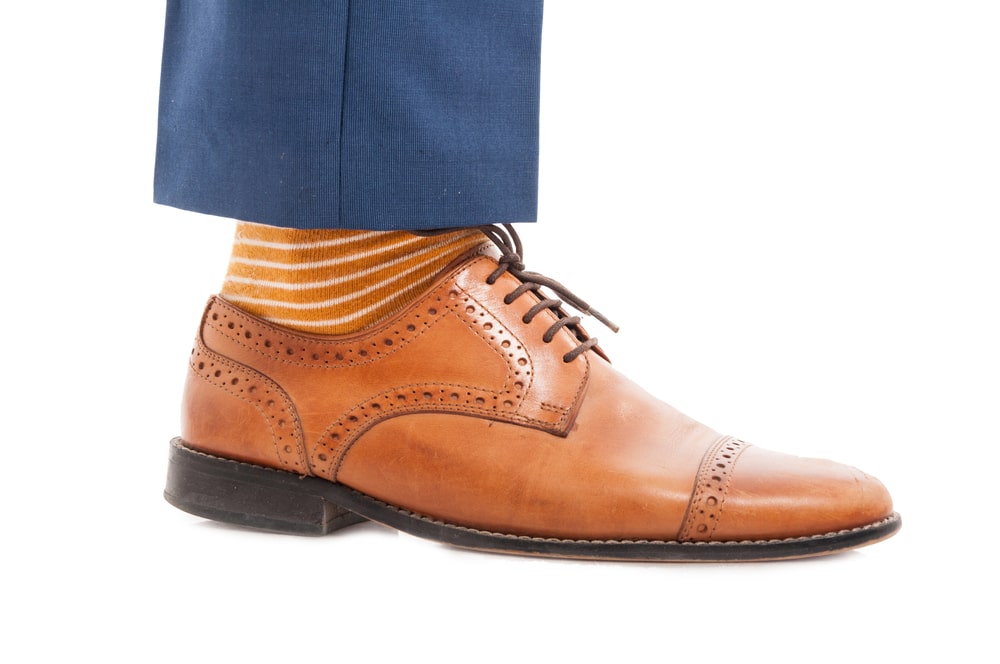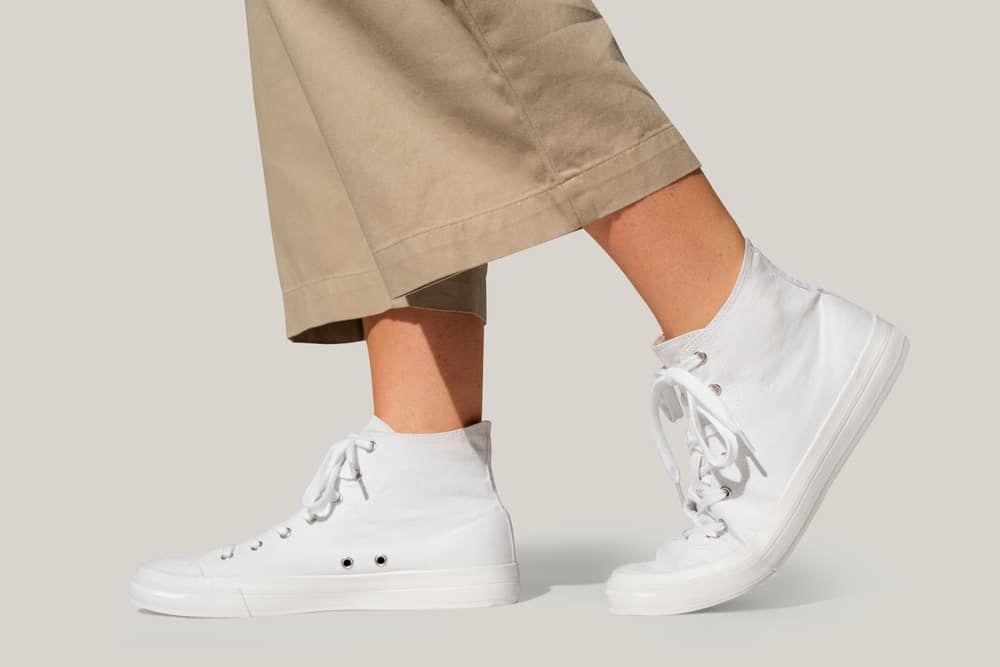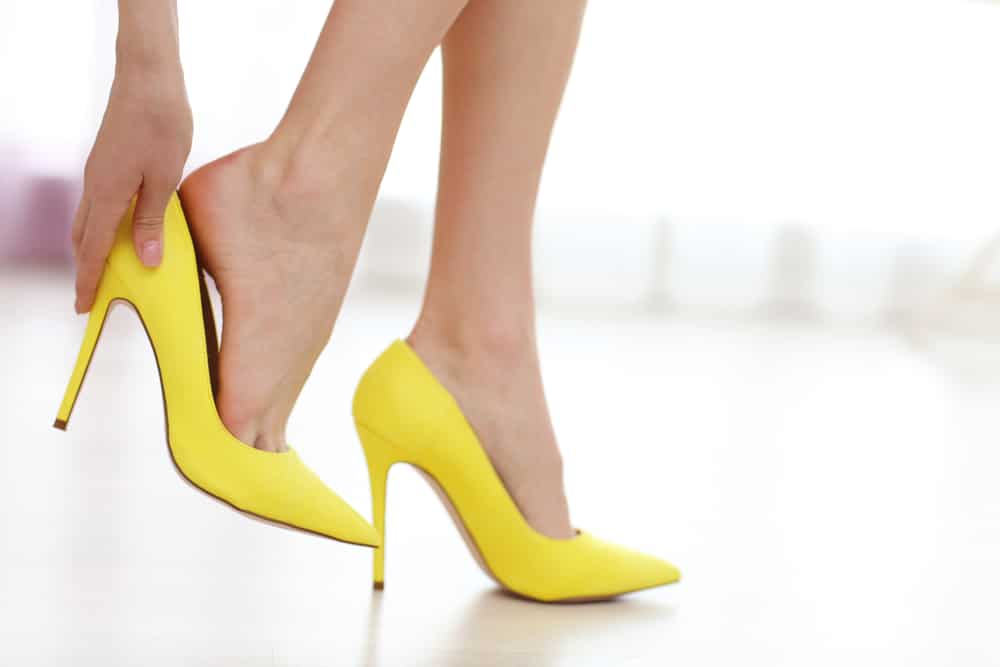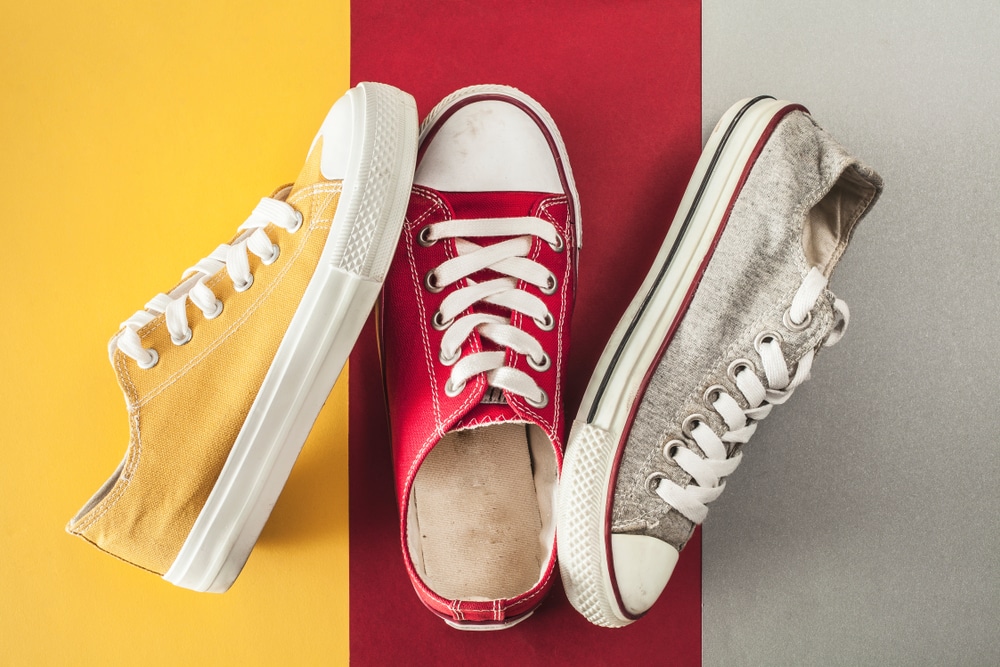
If you’ve ever bought a pair of shoes only to find out they don’t fit properly, you know the pain of dealing with ill-fitting footwear as I do.
While buying the right size is always the ideal solution, sometimes you might find yourself stuck with footwear that is just a little too big. I can relate to that!
However, the good news is you don’t have to suffer through blisters and discomfort. I have several DIY methods you can use to make your shoes smaller and get the perfect fit.
As a specialist of a shoe expert team from a multinational company, let me give you advice on how to make shoes smaller. I will also elaborate more with tips and tricks from footwear professionals to help you achieve a snug and comfortable fit.
Let’s get started!
Contents
Shoes Too Big Hacks

If you find yourself in a situation where you have purchased shoes that are too big, don’t despair. I have curated some hacks you can use to make them fit better.
Based on my professional experience for more than a decade, here are some of the most effective tricks you can try:
1. Use Insoles or Padding
This is my quick, simple, and effective method to fill up the extra space inside your footwear. You can use ready-made inserts or make your own by cutting foam or felt to size and inserting them into the toe box or under the heel.
2. Wear Thicker Shock or Double Up on Socks
I have tried this method, and it works awesome! In fact, wearing thick socks or doubling up on socks can create a snugger fit and help your shoes feel less loose. Or, a delicate or thin pair of dress socks can be exchanged for crew socks. This is most likely the easiest way to wear large footwear.
3. Use Balls of Footpads
Based on my experience, you can use balls or footpads to comfort your feet, especially if you often walk or run.
In fact, researchers from Shanghai University of Sports studied shoe cushioning effects and found that it has great impacts on foot loading and comfort perception during typical basketball maneuvers.
The balls of footpads are as good as insoles and considerably more comfy to use. Also, they are widely accessible and less priced.
4. Adjust the Laces
If your shoes have laces, I recommend you adjust them to tighten the shoe around your foot, which can help reduce slipping and sliding.
Moreover, a study from Journal of Sports Sciences showed that a firm foot-to-shoe coupling with higher lacing leads to a more effective use of running shoe features and is likely to reduce the risk of lower limb injury.
5. Opt for Elastic Bands
Elastic bands are another creative hack from my list! You can use elastic bands to create a tighter fit around the shoes. If the shoe is too wide, I advise you to pull it closer to your feet by stitching elastic bands to the back. Furthermore, strong elastic is required to sew elastic to the sides.
6. Shrink Shoes with Water
You can wear certain types of shoes that are too large for your feet after shrinking them with water.
But before you try this technique for large footwear, I strongly advise you to pay attention as it could harm your footwear as well, especially if they are made of leather. Let’s learn how to do this hack in the next paragraph with me!
How to Make Shoes Smaller DIY

Now, you may wonder how to shrink your too-big footwear on your own. If you have a pair of shoes that are too big and you don’t want to spend money on buying new ones, there are several DIY shoe alterations you can use to make your shoes smaller.
Check this out!
| No. | Method | Pro(s) | Con(s) |
| 1. | Use hot water Soak the shoes in hot water for about 30 minutes. Then, put them in the dryer on high heat. After that, keep the shoes on until they cool down. | It gives a better-fitting pair of shoes. Ideal for canvas shoes. | Not recommended for leather shoes. |
| 2. | Use water spray Spray the shoes with water. Put on a pair of thick socks on the damp shoes. Blow hot air on the areas of the shoe that feel too big for a few minutes, and keep the shoes on until they cool down. | Effective for leather shoes. | Not effective for canvas shoes. |
| 3. | Use shoe inserts Put the shoe inserts to make your shoes feel smaller. You can purchase ready-made shoe fillers or make your own by cutting foam or felt to size and inserting them into the toe box or under the heel. | Fill up the extra space inside your shoes. Ideal for any shoes. | You need to cut the shoe pads that don’t fit your shoes. |
| 4. | Use tape Use duct or strong tape to create a tighter fit around your shoes. Wrap the tape around the areas of the shoes that feel too big until you achieve the desired fit. | Completely tighten your shoes to your feet. | Damage your shoe shape. |
| 5. | Use vinegar Soak a pair of socks in vinegar for 2 hours and wear them with your shoes. Dry entirely in the sunlight. Research from RMKShoes experts mentioned that vinegar has a mildly acidic pH, and its acetic acid shrinks leather fibers. | A natural way that won’t damage your shoe material. | It has an acidic smell. |
How to Use Insoles to Make Shoes Smaller

Insole inserts are designed to help adjust the fit of shoes by providing cushioning and extra support. They come in a variety of sizes and thicknesses, allowing you to customize the fit of your footwear.
According to my shoe expert and researcher team, here are some tips on how to use insoles to make shoes smaller:
1. Measure Your Feet
Before purchasing insoles, I urge you to measure your feet to ensure you get the right size. Then, use a measuring tape to measure the length and width of your foot from the heel to the tip of your longest toe.
Once you have your measurements, I recommend using an online shoe sizing chart to determine the correct size of the insole for your feet.
2. Choose the Right Insoles
For this one, I strongly advise you to look for the best insoles that are designed to provide extra cushioning and support and that are appropriate for the type of shoe you want to make smaller.
Moreover, there are different types of insoles available for different foot shapes and sizes, so make sure you select the right ones for your needs. Here’s my pick for the best insoles for shoes that are too big, rating 9/10.
3. Place the Insoles in the Shoes
Once you have chosen the right insoles, place them inside the shoes. Insoles can be placed under the existing insole, on top of the existing insole, or in the toe box or heel area of the shoe.
4. Test the Fit
After that, put the shoes on and walk around to test the fit. The insoles should provide additional cushioning and fill up any extra space in the footwear, making them feel smaller and more snug.
If you need more support or cushioning, I recommend adding additional insoles or padding as needed.
5. Trim the Insoles
If the insoles are too long or wide for your shoes, I usually trim them down to size using scissors or a knife. You can follow my tips, too. In addition, be sure to check the manufacturer’s instructions on how to trim the insoles.
How to Make Shoes Smaller with Water

Do you have a pair of footwear that are a bit too big? Well, I have another hack to temporarily make your shoes smaller with water to get a better fit!
Shoe experts from DC.One mentioned that this method works best for your canvas sneakers! As a professional shoe expert, let me compile the method in simple steps below so you can try it right away!
- I’ll start by filling a container with warm water.
- Then, I submerge the shoe in the container and let it soak for 30 minutes.
- Next, I’ll take the shoe out and stuff it with newspaper. Based on my experience, this will help it keep its shape as it dries.
- After that, I put the shoe on and wear it around the house for about an hour. It will help it stretch and form into the shape of your foot.
- For the next step, I take the shoe off and let it air dry.
- Finally, I’ll put it on again and see if it fits better once the shoe is dry.
How to Shrink Shoes to Make Them Smaller

If you need another shoe-shrinking idea that requires less water for your leather shoes, then you come to the right place because I have curated another one!
Based on my professional experience, shrinking leather shoes can be a risky process and may not always be successful. Keep in mind if you do successfully shrink your shoes, it may damage your shoe material.
However, if you would like to try shrinking your leather shoes, here are some steps you can follow:
- I’ll start by wetting the shoes. Then, use a spray bottle filled with cold water to spritz the shoes. Make sure they are completely saturated but not dripping.
- Place the footwear in the dryer. I’ll put them on the no-heat setting and let them tumble for about 10 minutes. This will help to shrink the leather.
- Remove the shoes from the dryer and stuff them with newspaper. Based on my experience, it will help to expand the leather, making it easier to shrink.
- Place the shoes back in the dryer. I usually turn the heat up to the highest setting and let them tumble for about 10 minutes.
- Then, I’ll remove the footwear from the dryer and stuff them with cotton balls. It will expand the leather and make it easier.
Frequently Asked Questions
1. What are shoe inserts to make shoes smaller?
I recommend shoe inserts for narrowing shoes that may include heel lifts and arch supports. Heel lifts can be used to decrease the shoe size by raising the heel higher off the ground, while arch supports can be used to add more cushioning and support to the foot, which can help make the shoe fit more snugly.
2. What are toe inserts for shoes that are too big?
Toe inserts for shoes that are too big are pieces of foam, gel, or fabric that are inserted into the toe area of the shoe to reduce the amount of space in the toe box.
Based on my experience, this helps to prevent the foot from sliding forward and rubbing against the front of the shoe, which can cause blisters and discomfort. For maximum comfort, pair these full insoles or toe cushions with your too-big shoe pair of inserts.
3. How to make shoes smaller without insoles?
When it comes to shortening shoes without insoles, I think you can opt for a shoe repair or shoe stretching service. This is a good option if you have footwear that are just a bit too big and you don’t want to invest in insoles.
Furthermore, you can also try using a blow dryer to heat the areas of the shoe you want to make smaller, then using a shoe stretch spray to help the shoe conform to your feet. This method can be effective but can also cause damage to the shoe if not done properly.
4. How to make shoes tighter in the heel?
Wearing thicker socks can help to cushion the heel and provide a tighter fit. Or, you can try a half-size smaller shoe.
If your heel feels too loose, I recommend trying a half-size smaller shoe. Moreover, heel grips can be inserted into the heel of the shoe to provide extra cushioning and stability.
Summary or Conclusion
In general, I think it is not recommended to try to make shoes smaller. It is always best to purchase footwear that fits properly from the start. However, if you find yourself with shoes that are too big, there are some methods you can try to make them fit better.
Furthermore, it’s important to be cautious and patient when attempting to make shoes smaller and to avoid causing any damage to the shoes.
I also want you to remember always to wear the appropriate socks or insoles. In addition, consider seeking professional shoe alterations help from a cobbler or shoe specialist if needed.
